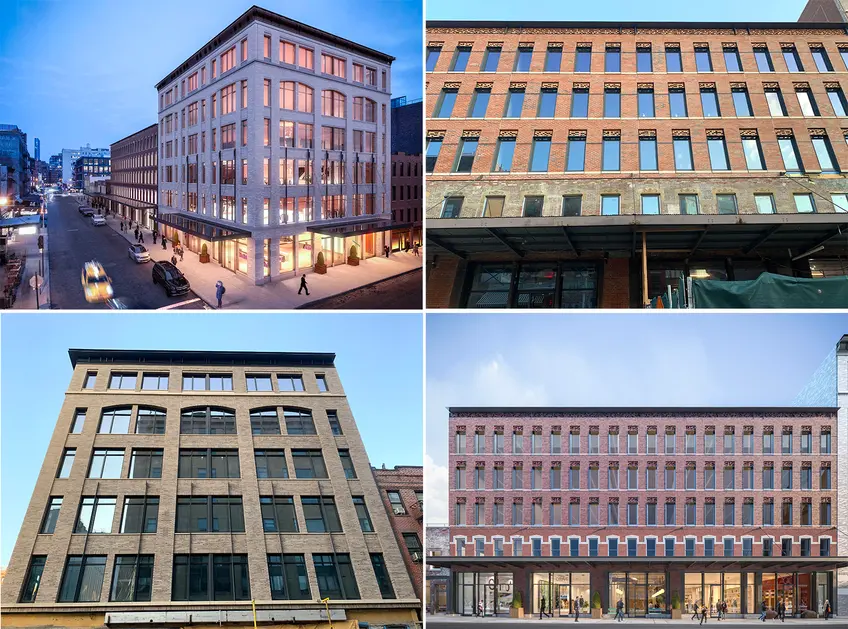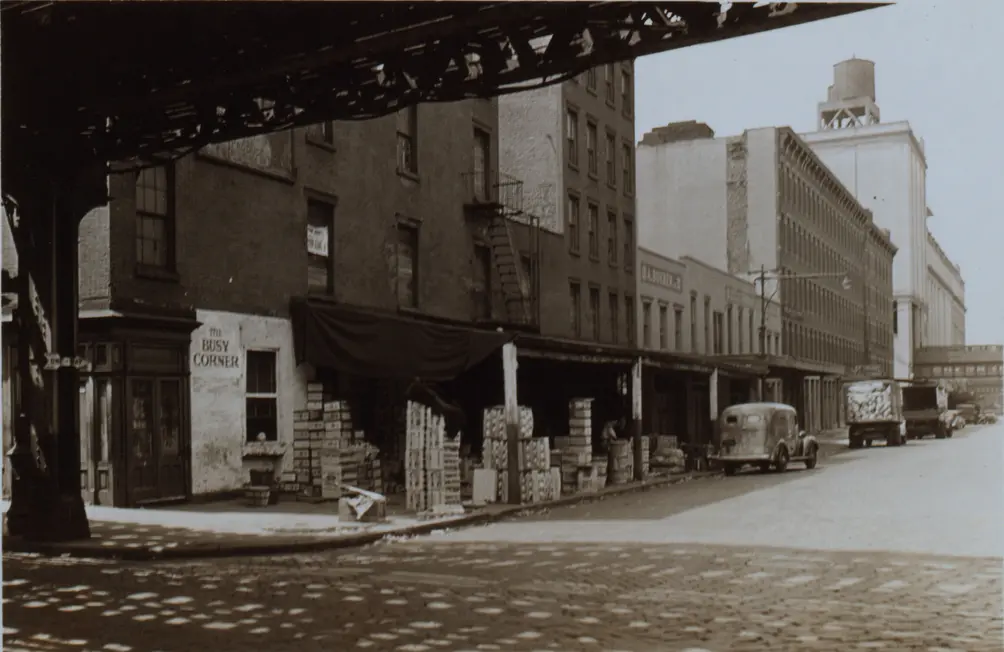 Renderings and recent photos of the largest buildings comprising Gansevoort Row
Renderings and recent photos of the largest buildings comprising Gansevoort Row
Over the past two decades, the Meatpacking District has transformed from an odorous industrial district living up to its name to a pedestrian/tourist-friendly destination that serves as a nucleus to Manhattan's nightlife, creative office, high-end dining, shopping, and hospitality scene. As the area becomes more polished, to the dismay of nostalgic New Yorkers, its southernmost street, Gansevoort, is getting a sizeable new commercial development known as Gansevoort Row.
 Gansevoort Row and the Meatpacking Distring of yesteryear (1938 -NYPL)
Gansevoort Row and the Meatpacking Distring of yesteryear (1938 -NYPL)
Steered by Aurora Capital and William E. Gottlieb Real Estate, Gansevoort Row is situated between Greenwich and Washington streets and is a fusion of historic pre-war structures with new construction. Upon full completion, the adaptive reuse project will bring 110,000 square of new and renovated commercial and retail space to the vibrant area. Last spring, luxury brand Hermès opened a three-level, 10,000-square-foot store at 46 Gansevoort Street and the acclaimed French restaurant Pastis made its new home at 52 Gansevoort Street. Last year, during sunnier economic times, The New York Post reported that Italian fashion brand Brunello Cucinelli, Belstaff, and clothing store Frame have signed on as tenants. Most recently, luxury watchmakers Audemars Piguet and Rolex announced that they would take space at 56-58 Gansevoort Street and 29 Ninth Avenue, respectively.
Regardless of its occupants, a recent visit to the block-long development shows that the Landmarks-approved contextual facades are successfully integrating into this trapezoidal patch of old Manhattan. Gansevoort Row designers BKSK Architects researched previous uses and former configurations before deciding what should be preserved and where new expansion could take place. The team designed articulated brick facades that nod to the neighborhood's history and the new buildings/addition rise no higher than six stories or 81 feet. The approved final design iteration was still thought to be overscaled for some local preservationists, who unsuccessfully lobbied to stop the development. Nevertheless, with the unveiling of the facades of the westernmost commercial buildings, construction appears on track to be completed late this year.
The overall pedestrian experience in the Meatpacking District has improved in recent years with new Belgian-block pavements, street planters, and most recently several streets have been closed to vehicular traffic by way of the city's Open Streets program. In August 2019, government officials, the Meatpacking District BID, and local stakeholders celebrated the grand opening
of three new public plazas: Gansevoort Plaza, The Chelsea Triangle, and the 14th Street Square. Last weekend, The High Line, which terminates/begins at Gansevoort Street, announced they will partially reopen on July 16. Other neighborhood attractions include Chelsea Market, the Whitney Museum, and the future home of Little Island along the Hudson River waterfront. The Standard raised the bar for hospitality in the area, and Restoration Hardware’s first hotel at 55 Gansevoort Street is finishing construction across from Gansevoort Row.
Other notable local retail and dining institutions include Christian Louboutin, Tory Burch, Theory, Santina, Serafina, and Bubby’s.
Other notable local retail and dining institutions include Christian Louboutin, Tory Burch, Theory, Santina, Serafina, and Bubby’s.

 6sqft delivers the latest on real estate, architecture, and design, straight from New York City.
6sqft delivers the latest on real estate, architecture, and design, straight from New York City.
